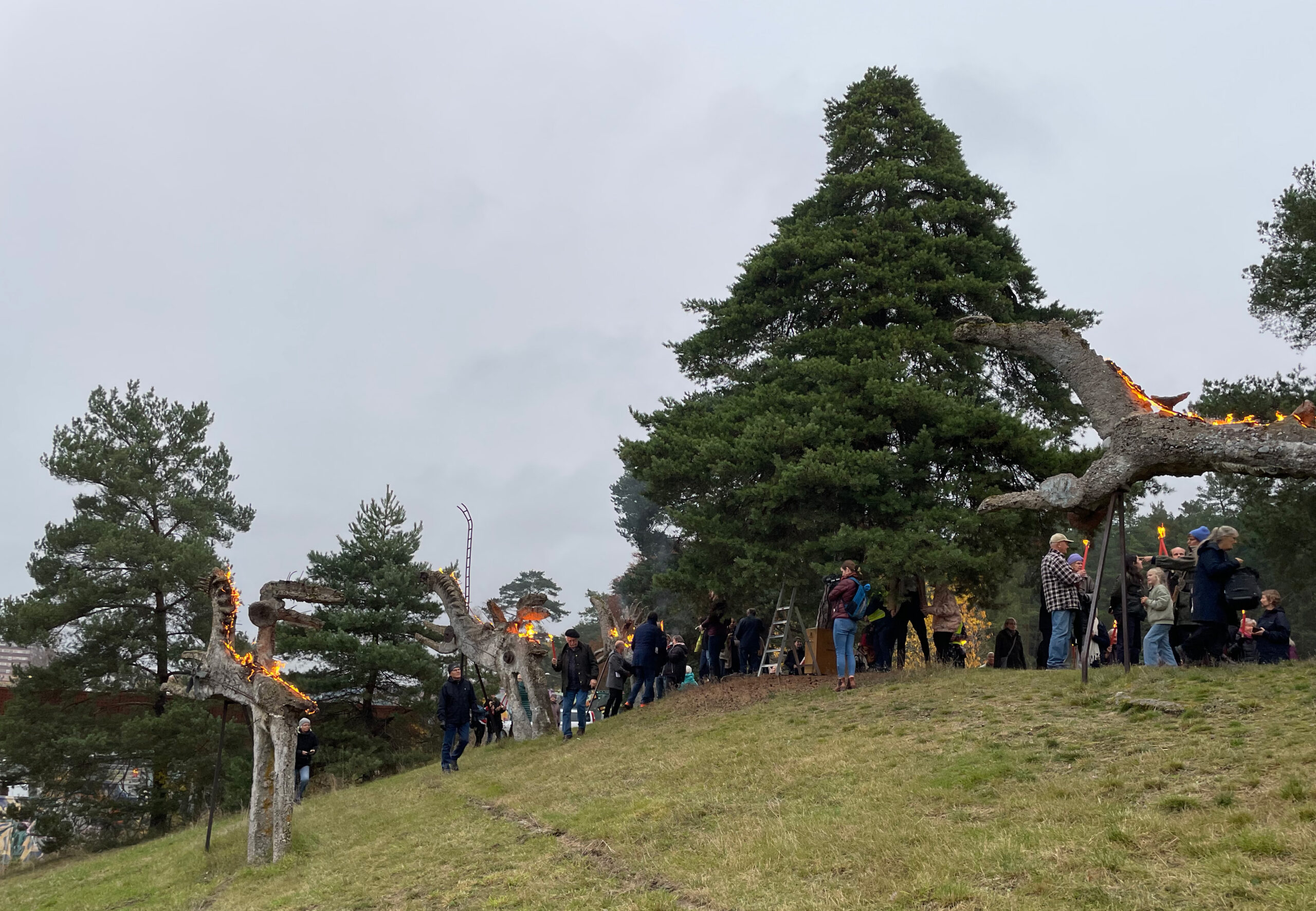
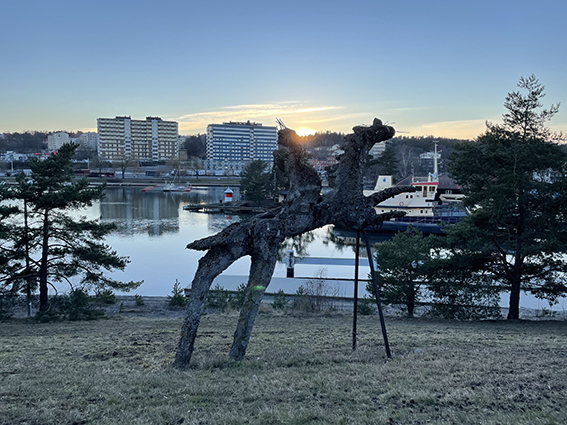

On the hill by the bathouse and down towards the canal by lake Maren you can see the sculpturegroup “Solspann”. Those who travel by train can see the sculptures from a distance, a few 100 meters towards Södertälje station.
Solspann was created on Wladyslaw Hasior’s own proposal in connection with his exhibition at Södertälje konsthall together with colleague Jerzy Beres´. On the cultural committee’s agenda on 24 October 1972, you can read “Hasior originally offered to cast sculptures in Södertälje as an extra attraction in connection with his exhibition. His production method is unique and can attract great audience interest. ”.
Photos: Solspann, March 2021.

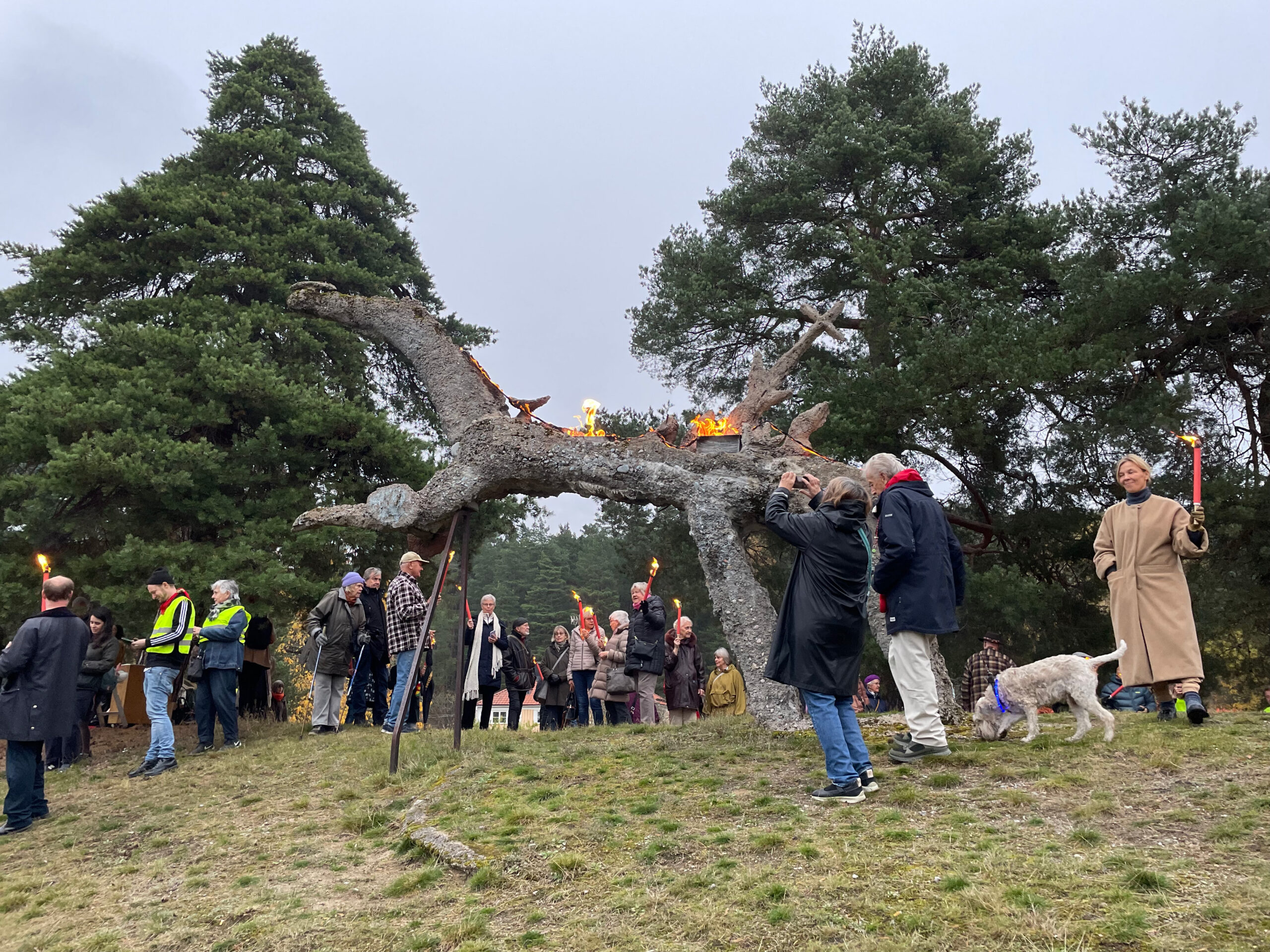
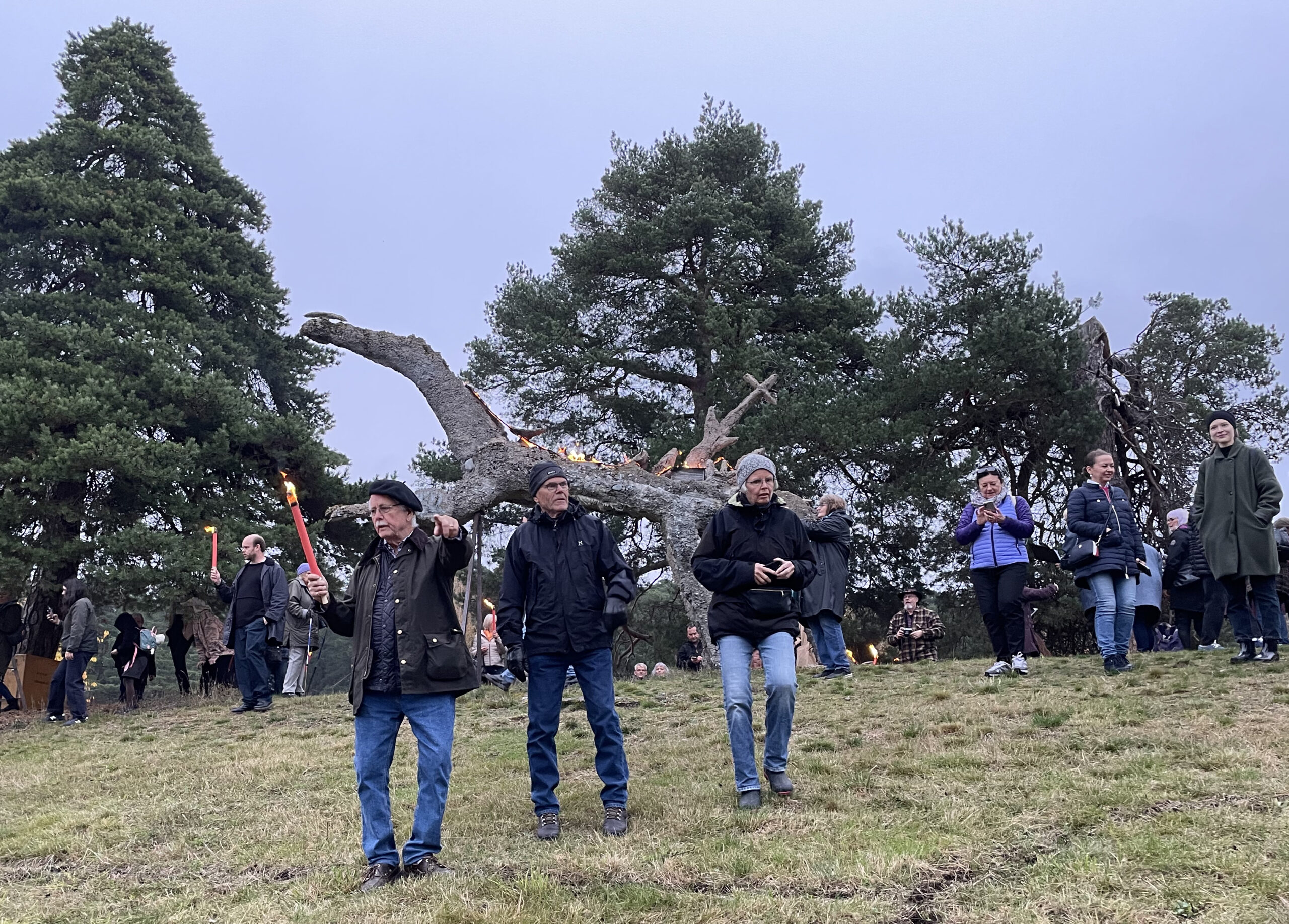
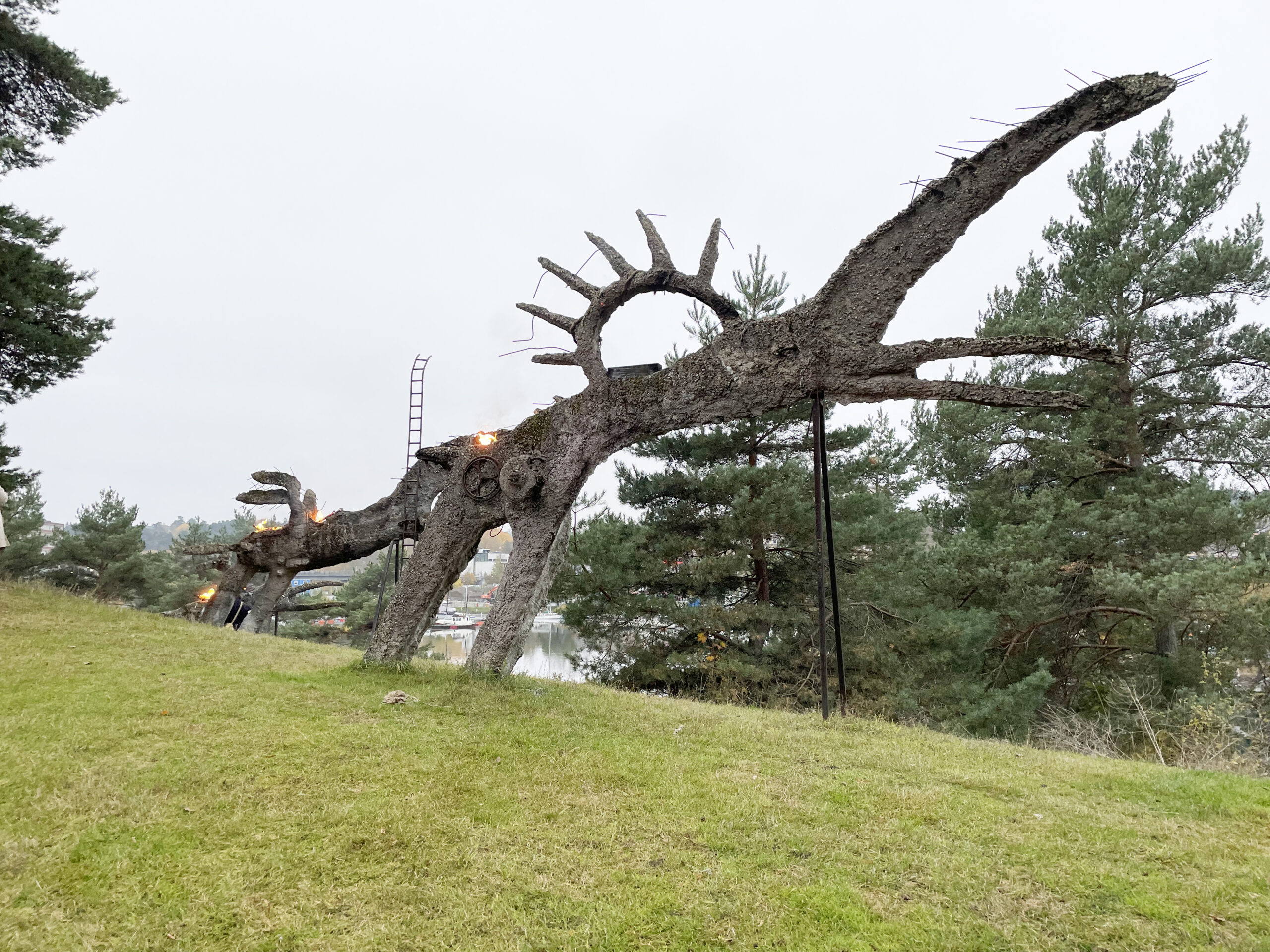
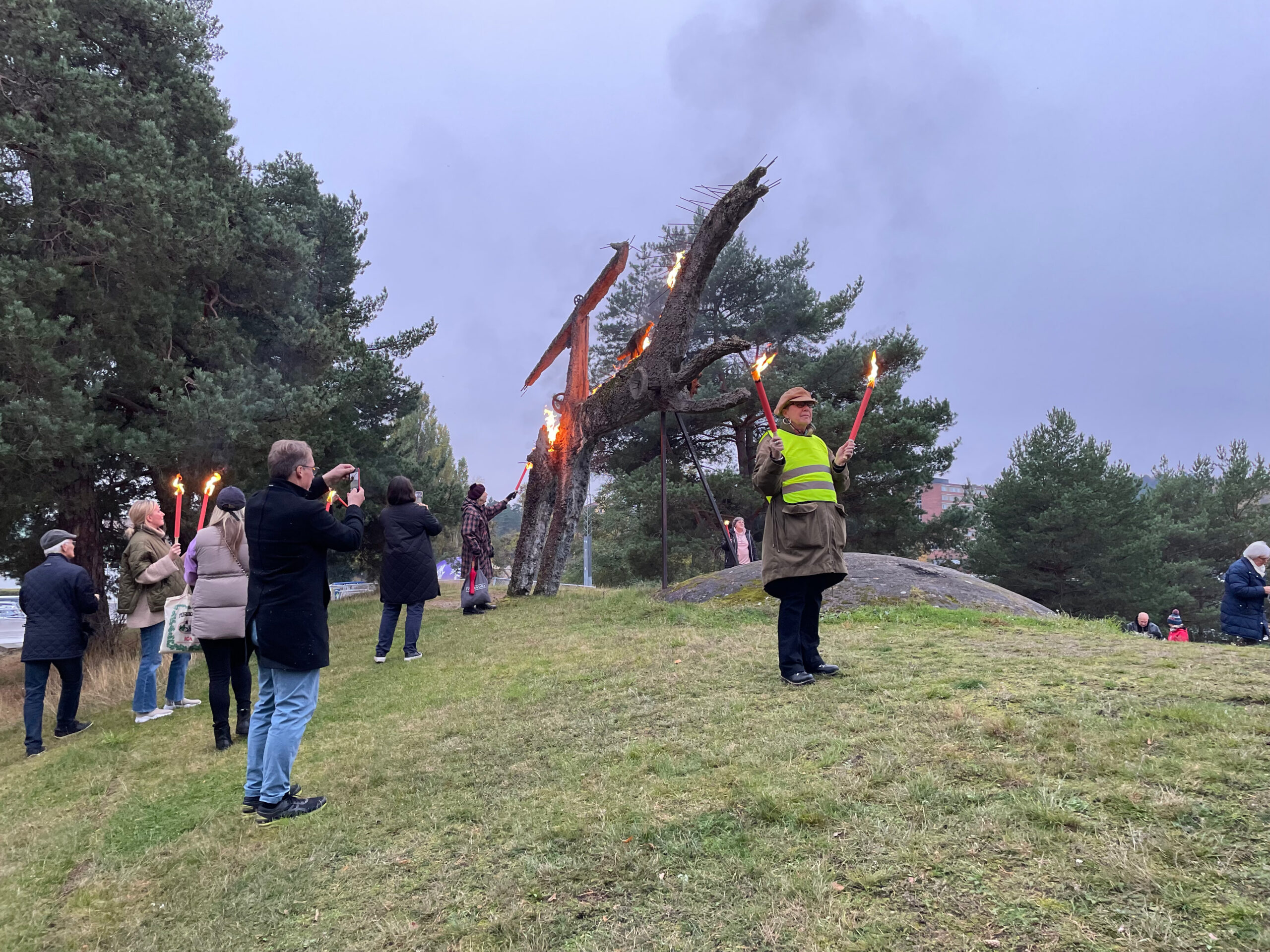
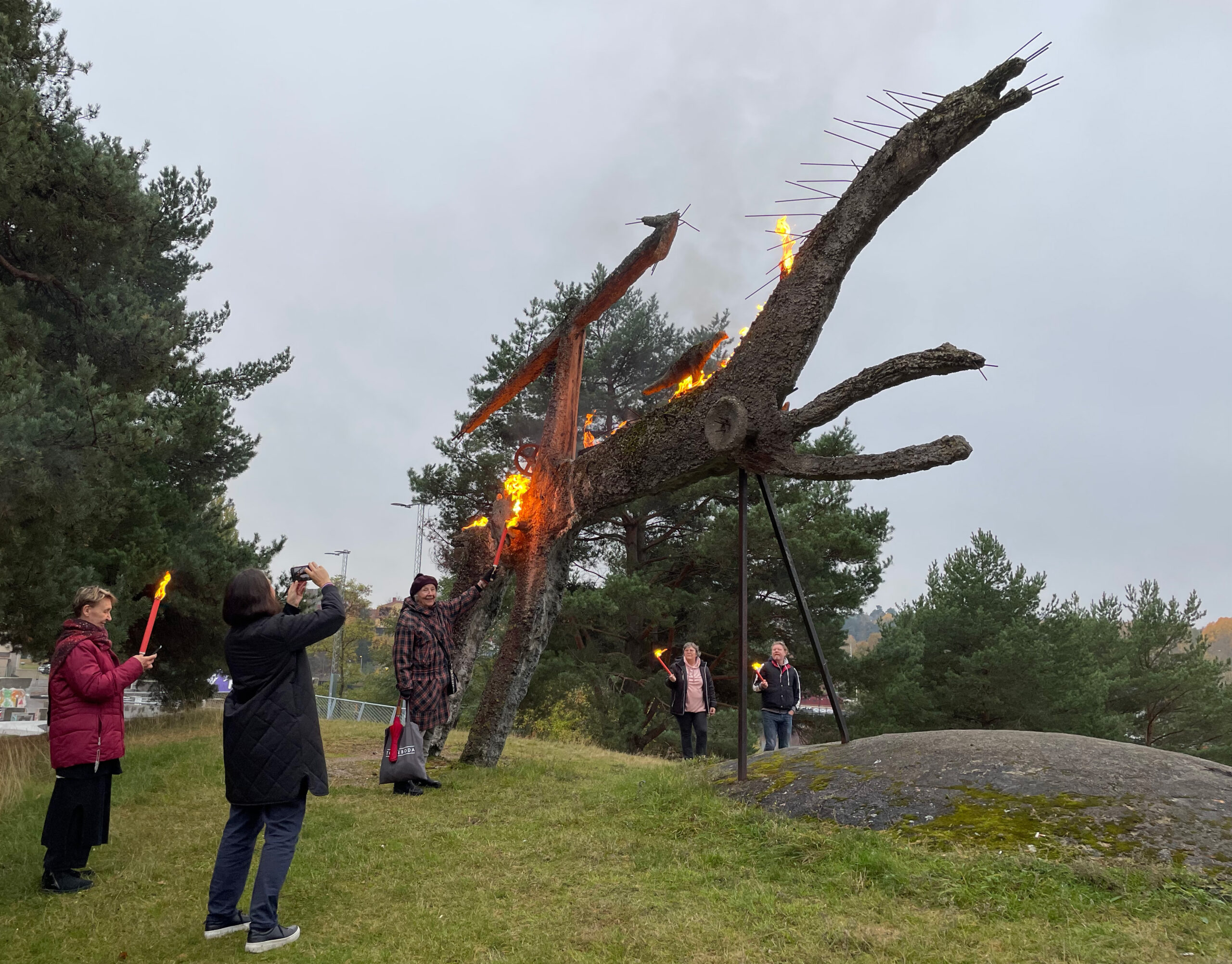
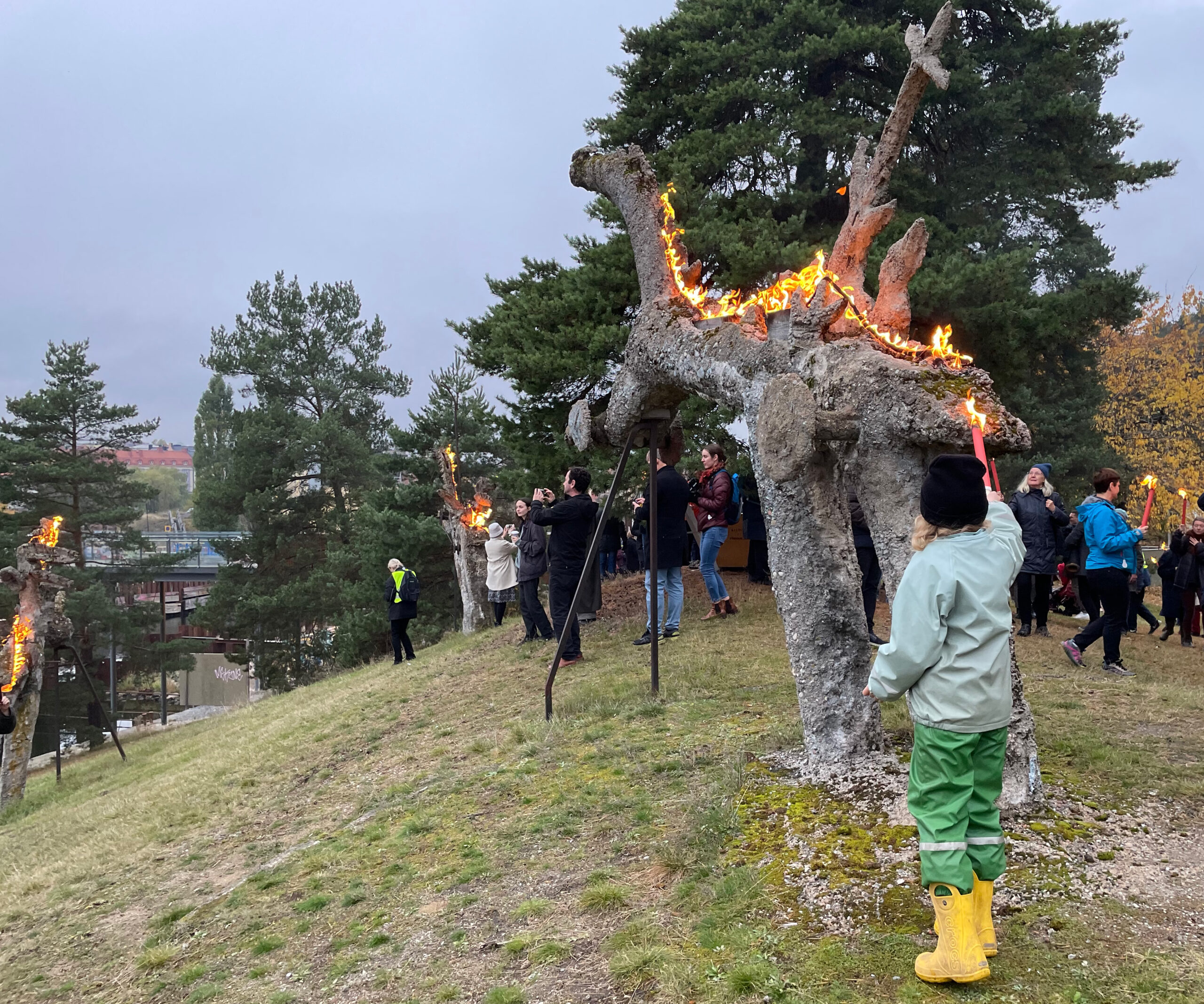
The land where the hill is located was owned for the most part by the Swedish Maritime Administration. In a letter to the Swedish Maritime Administration on October 20, 1972, the municipal board requests permission to place Solspann on the site. The letter states that Södertälje konsthalls assistant curator Ingvar Claeson showed sketches for department director Kjellgren at the Swedish Maritime Administration’s building section and the next day received a positive oral message. They were prepared to meet the Södertälje municipality’s wishes for the construction of the country’s largest monumental sculpture group.
Ahead of Hasior and Beres’ opening on October 29, 1972, a letter has been preserved for the wish to include an advertisement in Dagens Nyheter. Cultural curator Eje Högestätt will demonstrate the two exhibitions. “At the same time, he will treat the sculptural group that Hasior is casting on a hill next to Maren in central Södertälje. As the debate over Hasior’s sculptural composition has become lively, Eje Högestätt is happy to answer questions in connection with Sunday’s demonstration. ” There seem to have been quick jerks from words to action, and certainly a lively debate that i.a. resulted in a police report.
“Södertälje’s cultural curator Eje Högestätt has made himself known as an imaginative and combative man. It was his idea that Hasior should be hired. When the sculptures were finished, it began to howl. Among other things, a police report was made, in which it was alleged that protruding rebar “could easily injure people, and children, who try to climb on the statues”.
In a response to the consultation, Högestätt clarifies that the culture committee did not order climbing sculptures for a playground. “If we want an art created by strong artists, we can not decide on either the whole or the details. We can order a sculpture over a motif or theme, but if we want a work with an expression of the artist’s creative power and creative ability, then we cannot prescribe the work’s form and details. ”. (newspaper STORSTADEN undated document).
The sculpture group was carried out in three stages. Hasior returned in the summers of 1973 and 1976. On his first visit in connection with the show in 1972, the first horse was cast. In the summer of 1973, three sculptures were added, as well as the white-painted “solar carriage relief” at the canal slope and the red solar dome. In the summer of 1976, Solspann was completed with two more sculptures, as well as the sun symbol of cast white painted concrete as ground relief. Bengt Skoog describes in a municipal gift book published in 1980, photo / layout Jan Nordahl. “In the ground he dug the horses’ shapes, soil, gravel and stones provided material for the casting. Cranes raised the horses on the spot. With primordial force, they now blow their sun chariot forward over the hill. ”. The soil and gravel provided by the site were mixed with coarse-grained concrete. Per Drougge further describes the process, where a number of artisan experts are hired “They came with excavators, concrete mixers, crane trucks, water sprayers, etc.”. To the artist’s significant search for “objects trouvés”. Hasior inventoried the industrial dump in Södertälje, where he searched for old machine parts, especially wheel shapes of all kinds, steering wheels, fan propellers, gears, all attributes to the “horses” that would help to express dynamics and movement, but also remind of the solar disk. ” On Thursday, the first of July 1976, “Solspann” is inaugurated. In a notice in newspaper EXPRESSEN this day, you can read that Hasior himself lights the fires around the horses. Södertälje has long been rumored over its “Solspann”: the Pole Wladyslaw Hasior’s mysterious horse sculptures at the edge of the canal. In Södertälje, people are happy to point out that the city is the only Swedish owner of such a large sculpture group, also created by an artist with great international fame. ”.
As so often in Hasior’s works, Solspann takes its starting point in the deep mythological soil. The lighthouse team pulls Helio’s chariot across the firmament, but the work also carries the dimension of ancient Bronze Age culture with inspiration from rock carvings.
The rite, the myth, the torchlight procession and the illumination in the cavities in the horses’ backs, through the witch master Hasior’s secret recipe were now created. The torchlight procession towards Solspann became a popular, annual recurring happening for many years. With wind music at various stations across the lake and poetry readings in many languages by the horses. Each participant in the train with its own burning torch. Södertälje artist Hanna al Haek performed a spontaneous performance with his torch in his mouth at the illumination led by Hasior in 1989. The gathering place before the march towards the ceremony was at the town hall. Strict rules must be followed with permission from the police authority. Through the underpass towards the central station, one by one in a row-Lovisinsgatan-Stadsparken over the lock bridge towards the final destination.
Drougge writes before the 10th anniversary “It is a fantastic and unforgettable sight, to see the huge mythological horse sculptures with wings, birds, suns and spears on their backs, stand in fire and flame!”. On this occasion, poems were read in about 20 languages. The artwork gathered people from the multicultural society into one community. Per Drougge sowed the idea for what was then called an “immigrant festival”, which later became the Tälje Festival.
The torchlight procession is today a more sporadic happening and now under the auspices of ABF Södertälje. The secret recipe has been handed over, but is what we know is forbidden to use due to environmental hazards.
In the exhibition new public art 30 November 1973 – 13 January 1974, sketches and models were shown on the lower floor of Södertälje konsthall. In the preface, which is signed by the Cultural Curator Eje Högestätt and the Exhibition Assistant Per Drougge, Wladyslaw Hasior is especially highlighted with pride. At the center of this report is of course the Polish artist Wladyslaw HASIOR’s monument “SOLSPANNET” the large sculpture group on the by the canal and lake Maren. Södertälje has, thanks to this internationally renowned artist’s great generosity and thanks to the cultural committee’s exceptionally good relations with modern Polish art, managed to acquire a monument that is unique not only in Sweden but also in Europe. ”.
Sources: Södertälje konsthalls archive folder. Text and compiled by Anneli Karlsson.
Photos: Wladyslaw Hasior, 1972. Copyright Hans Clausen.
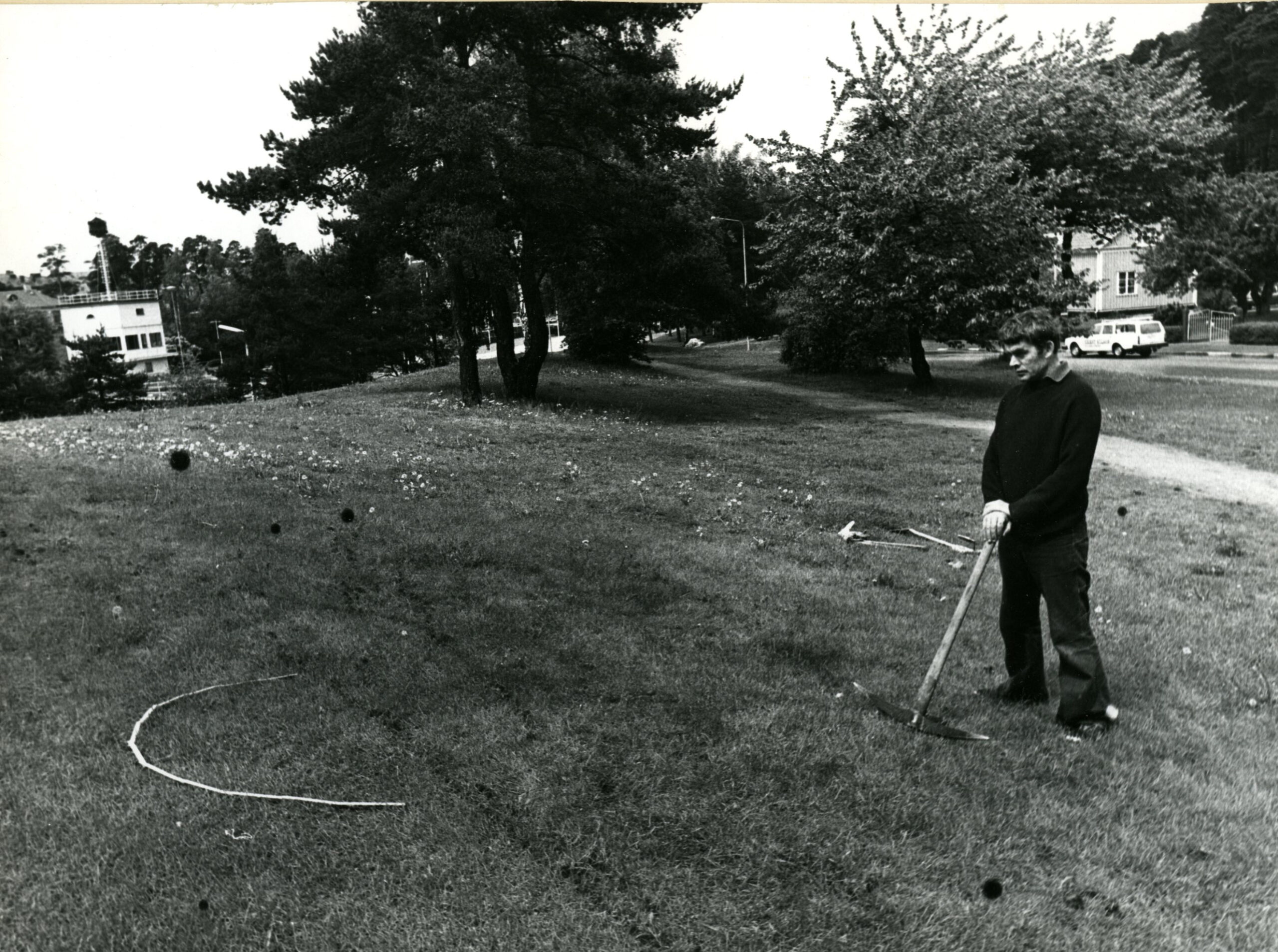
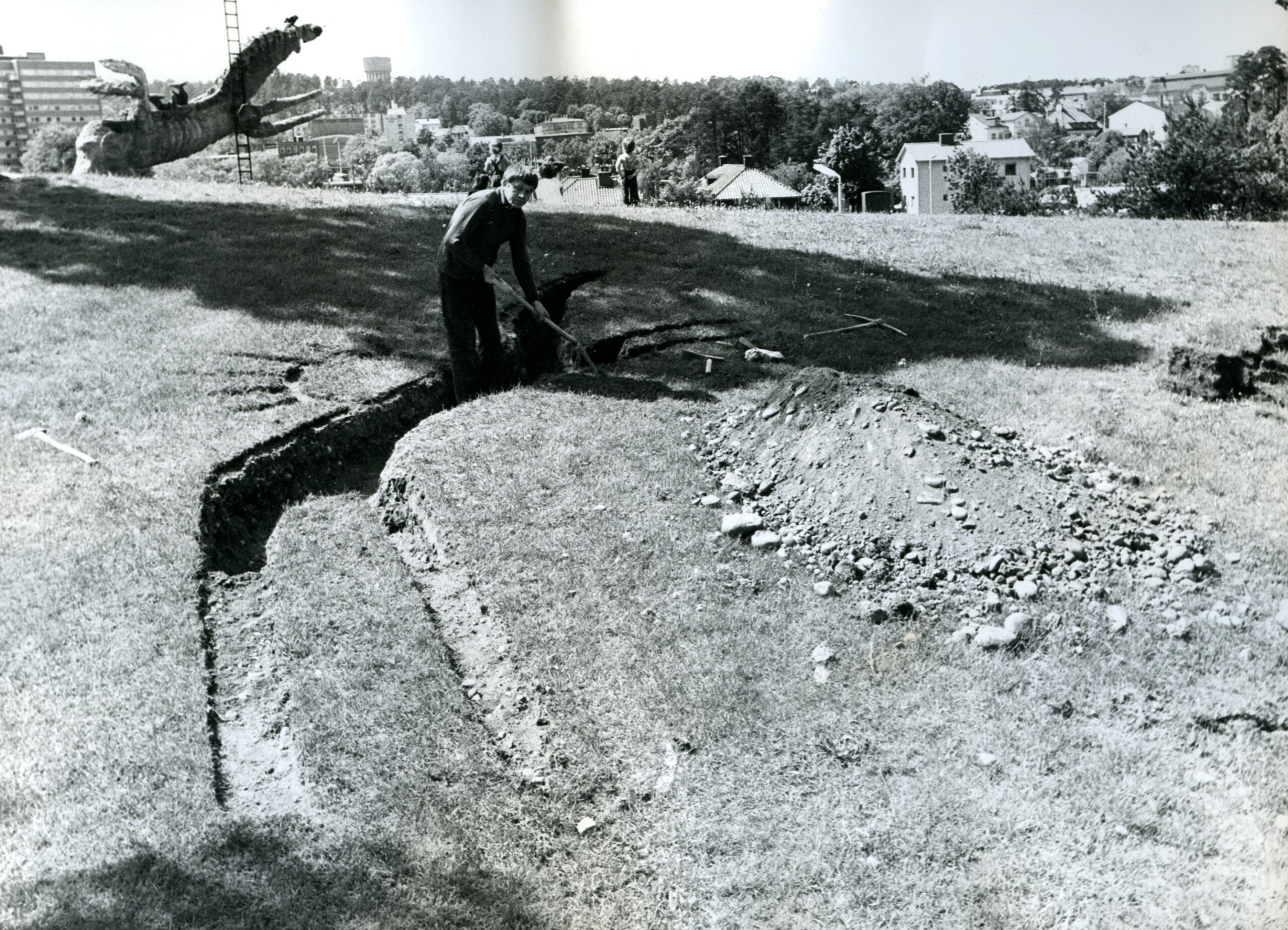
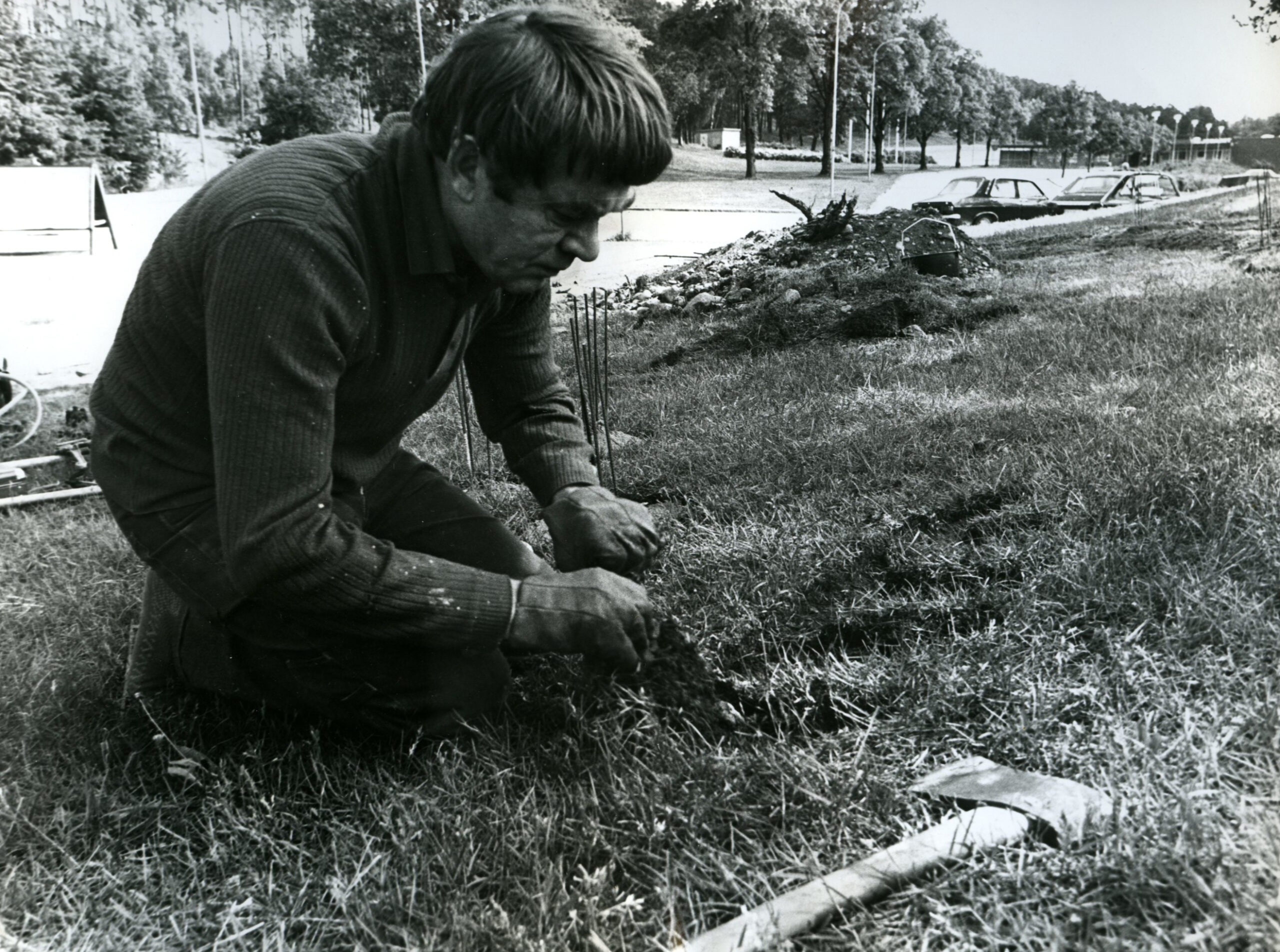
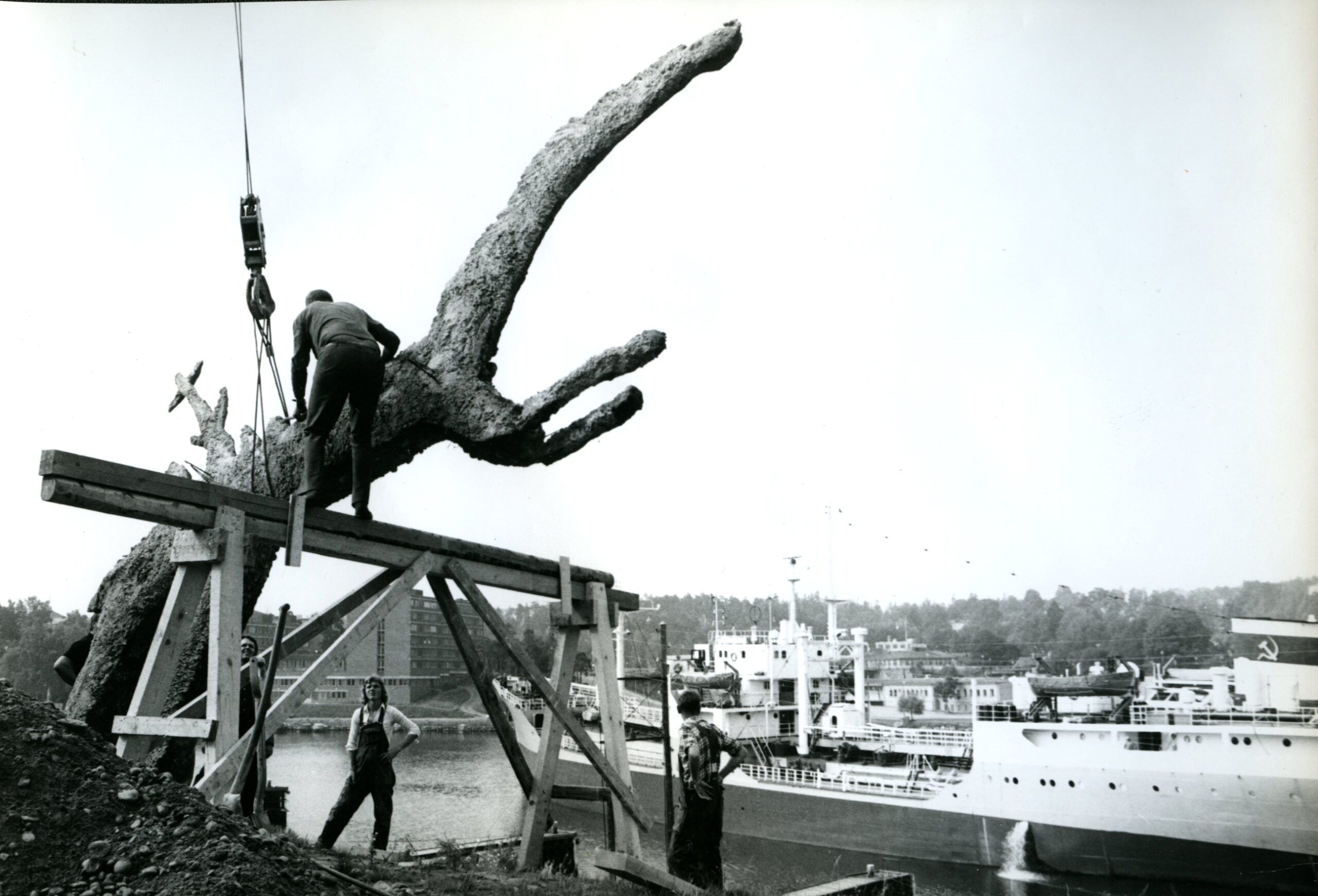
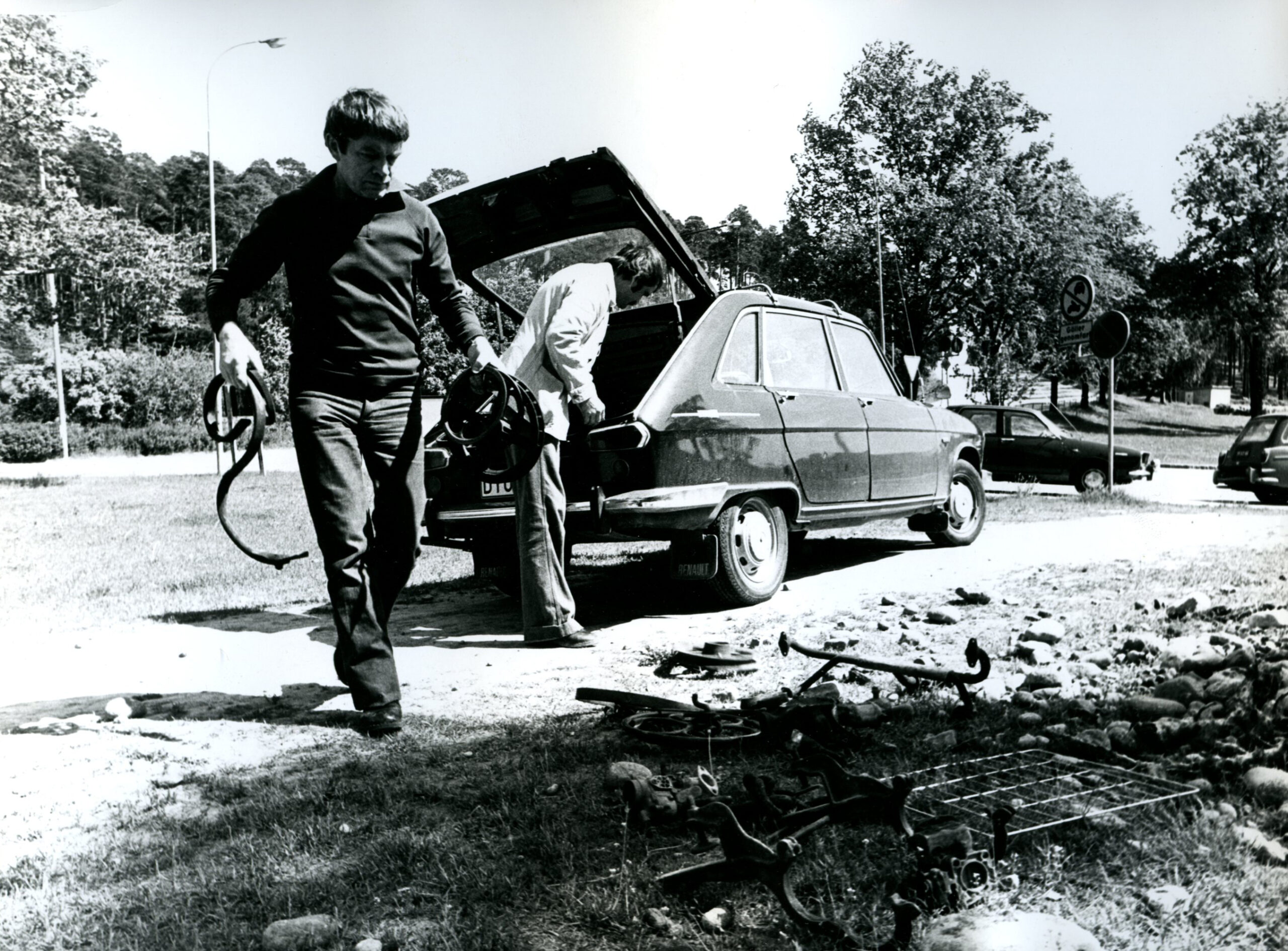
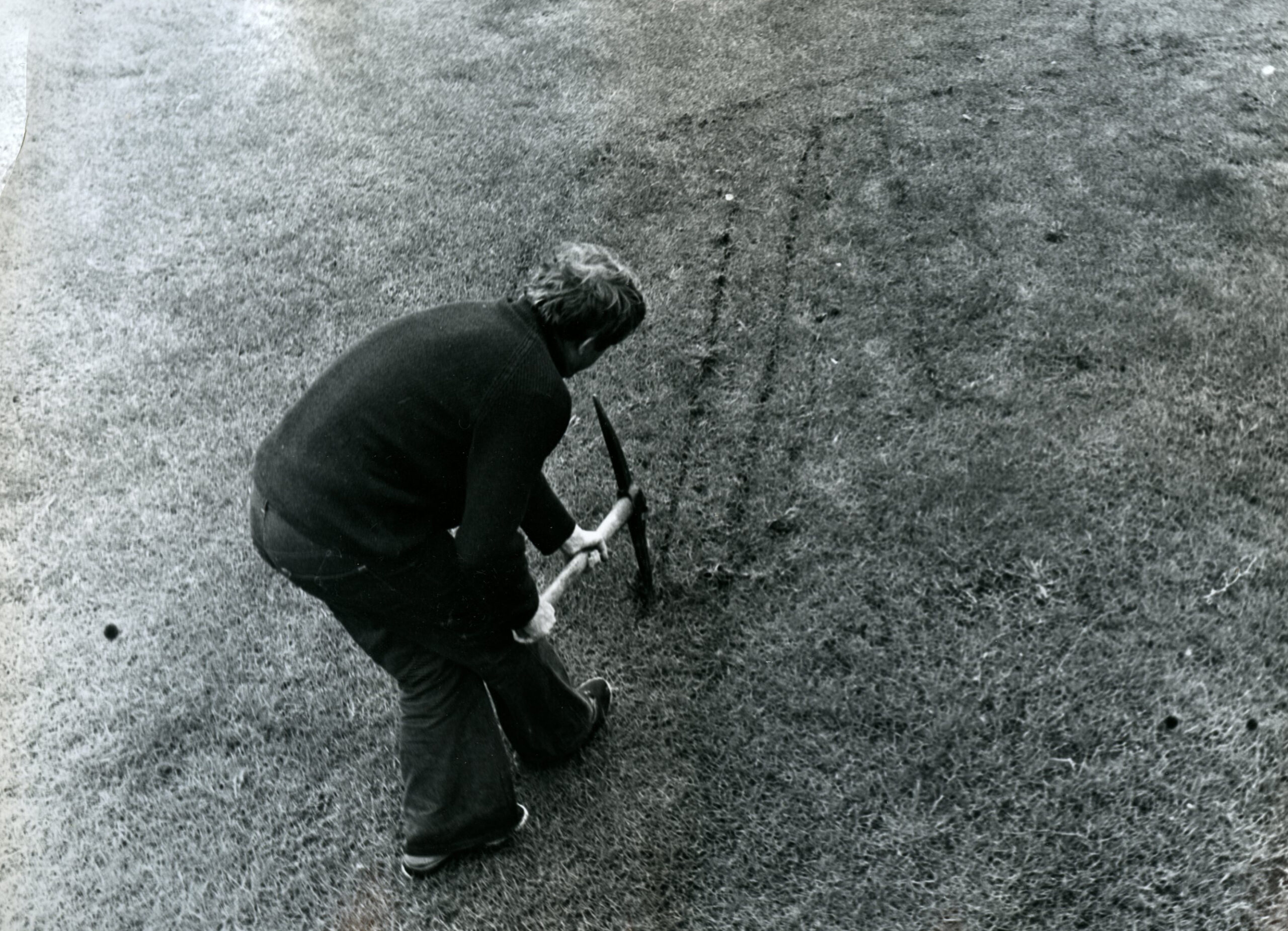
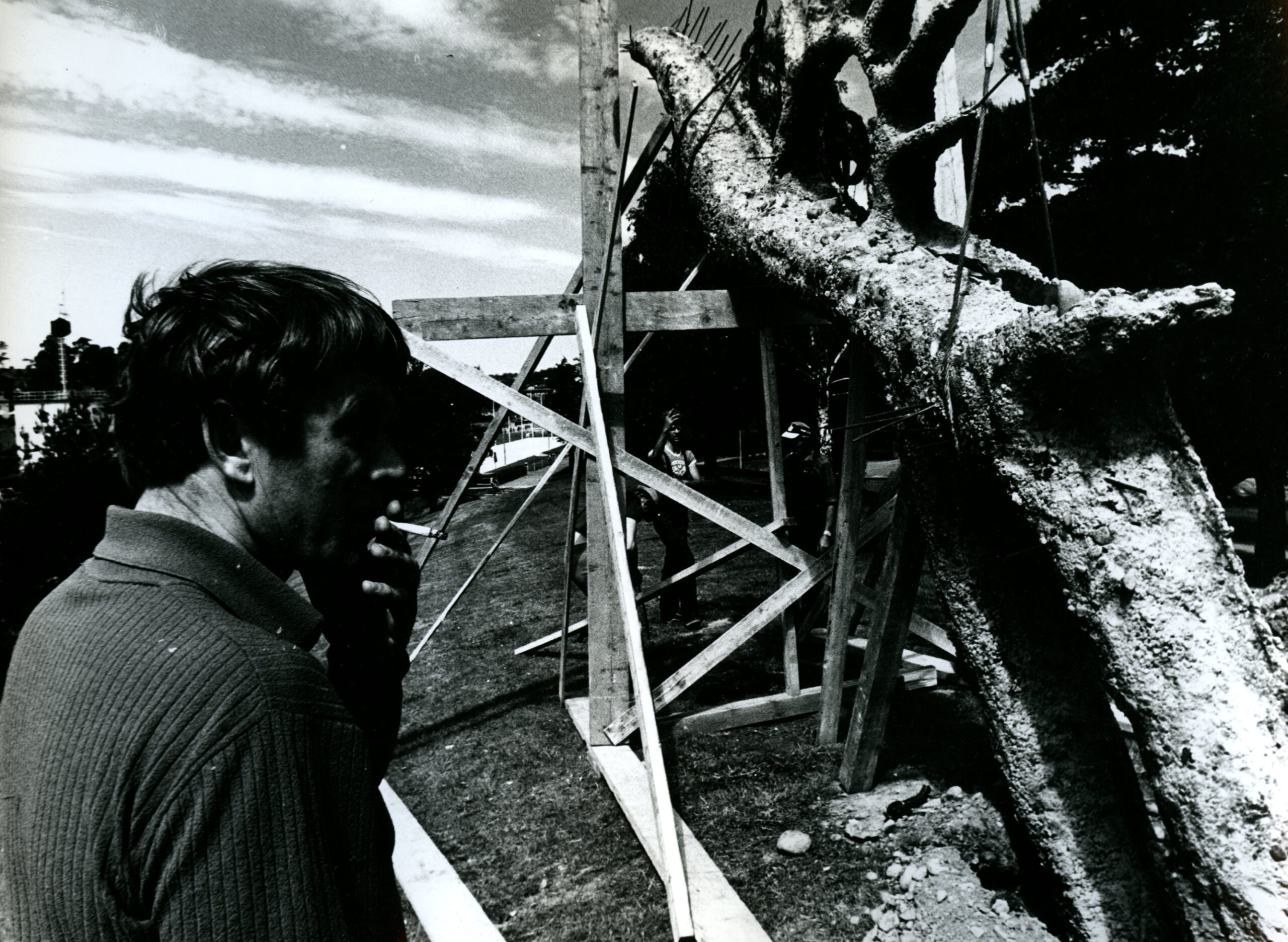
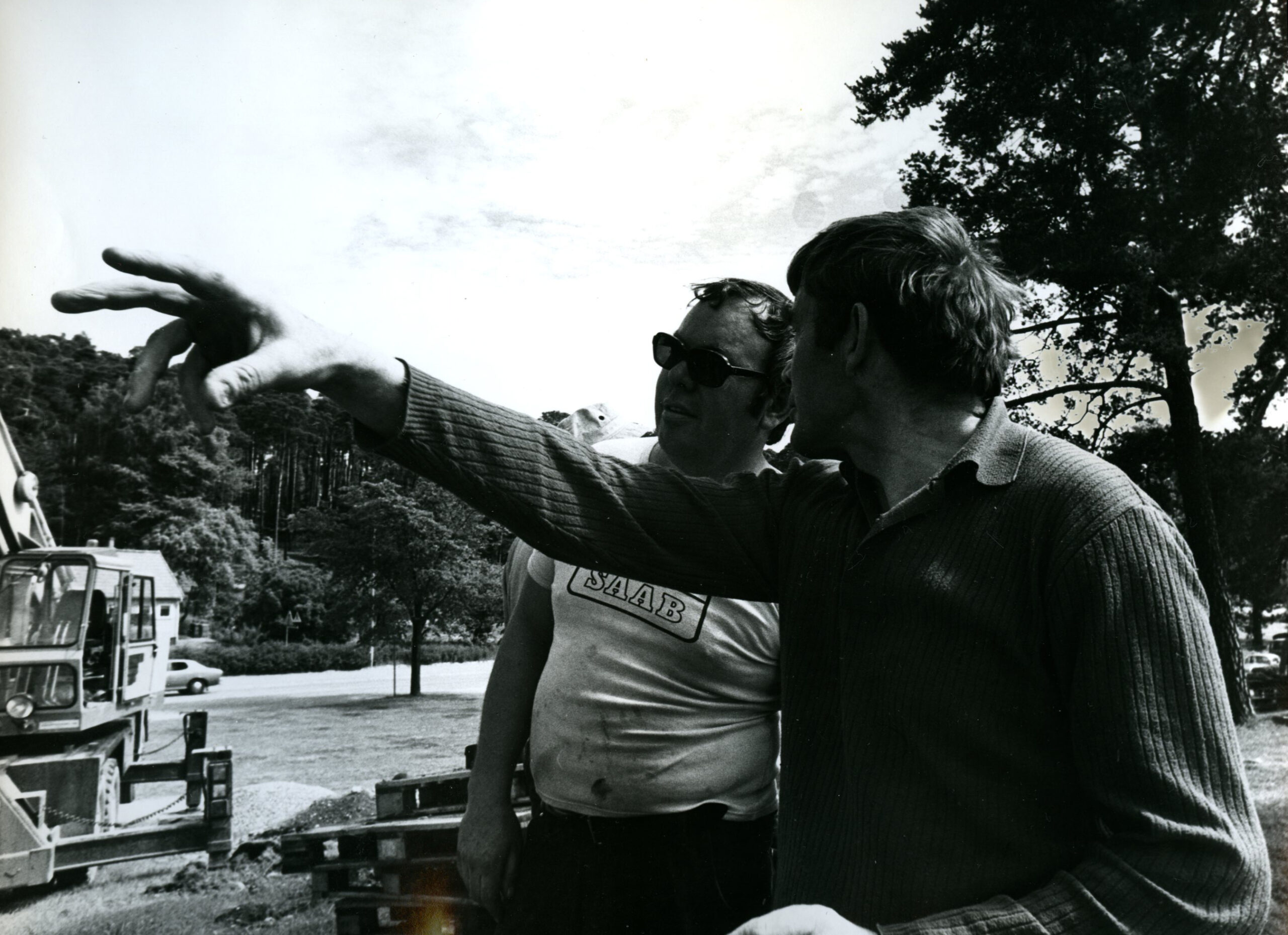
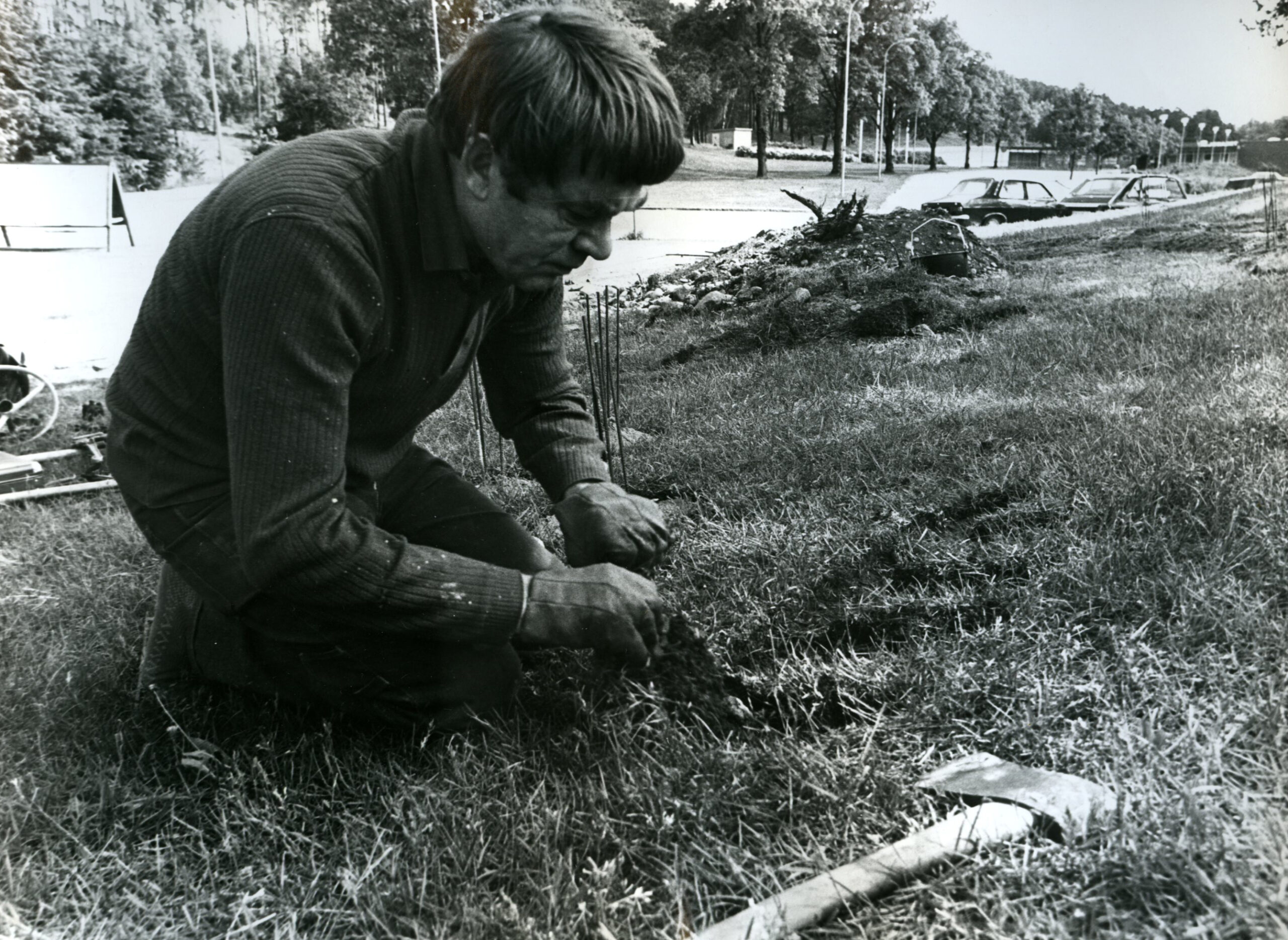
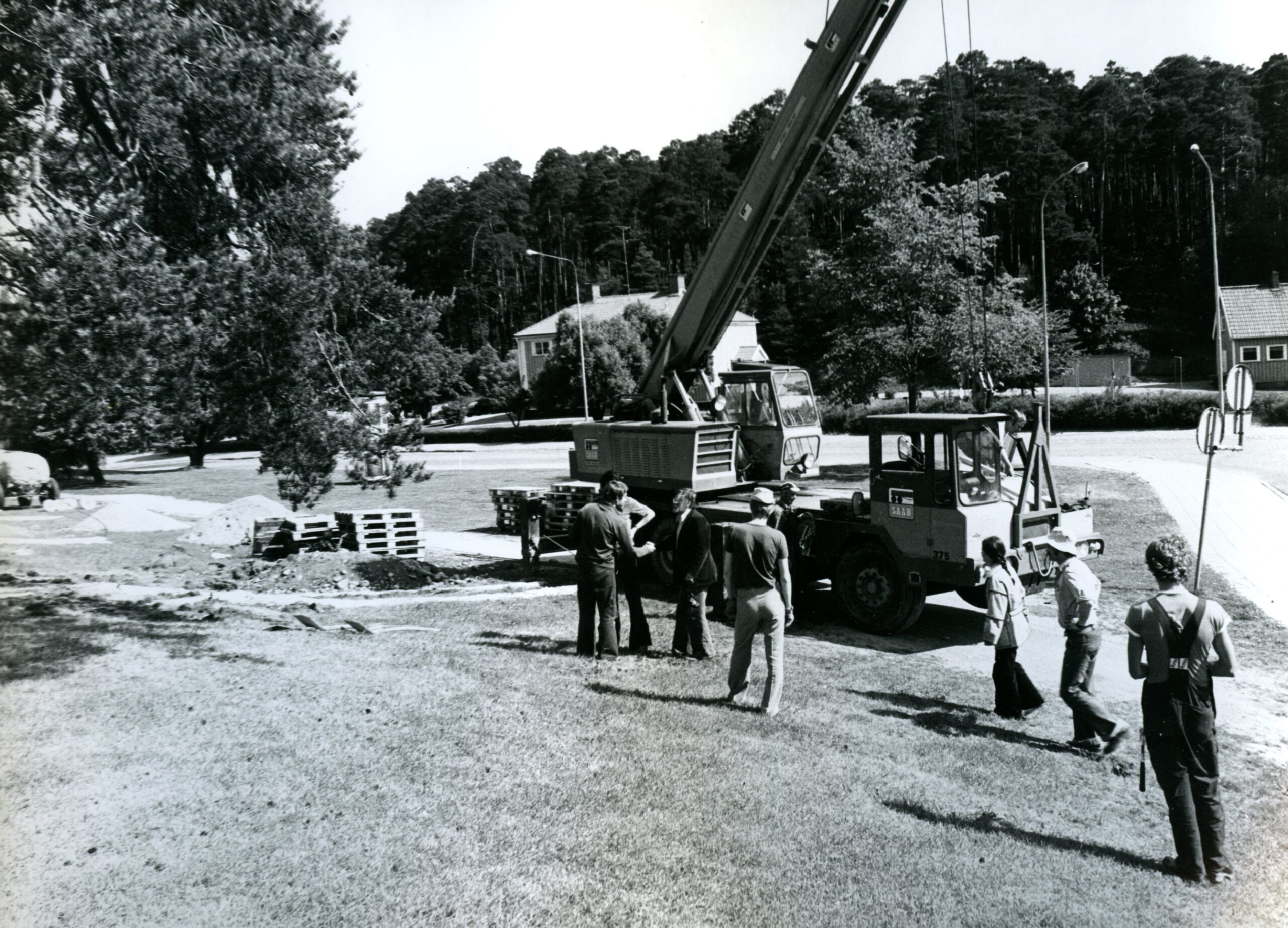
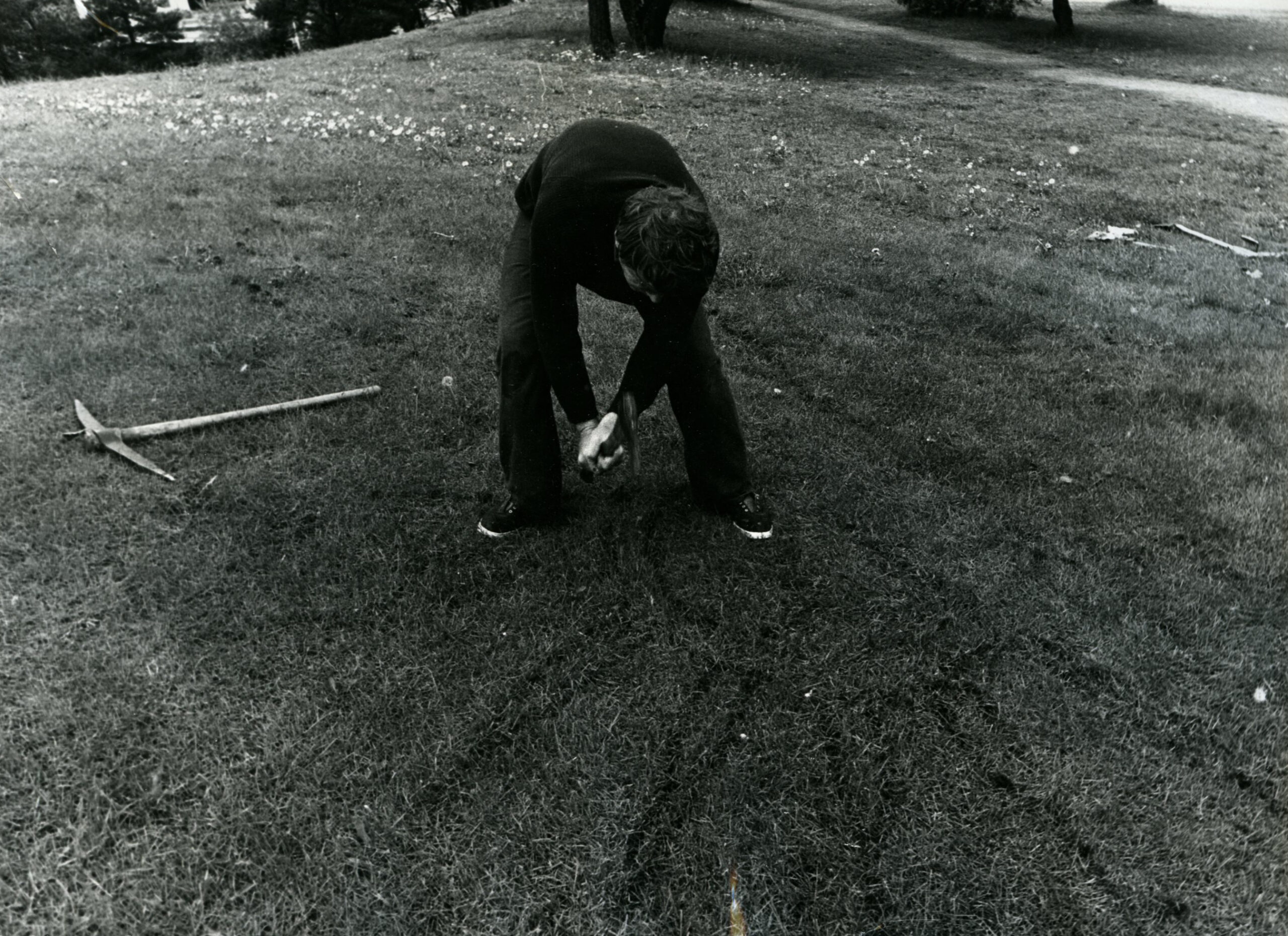







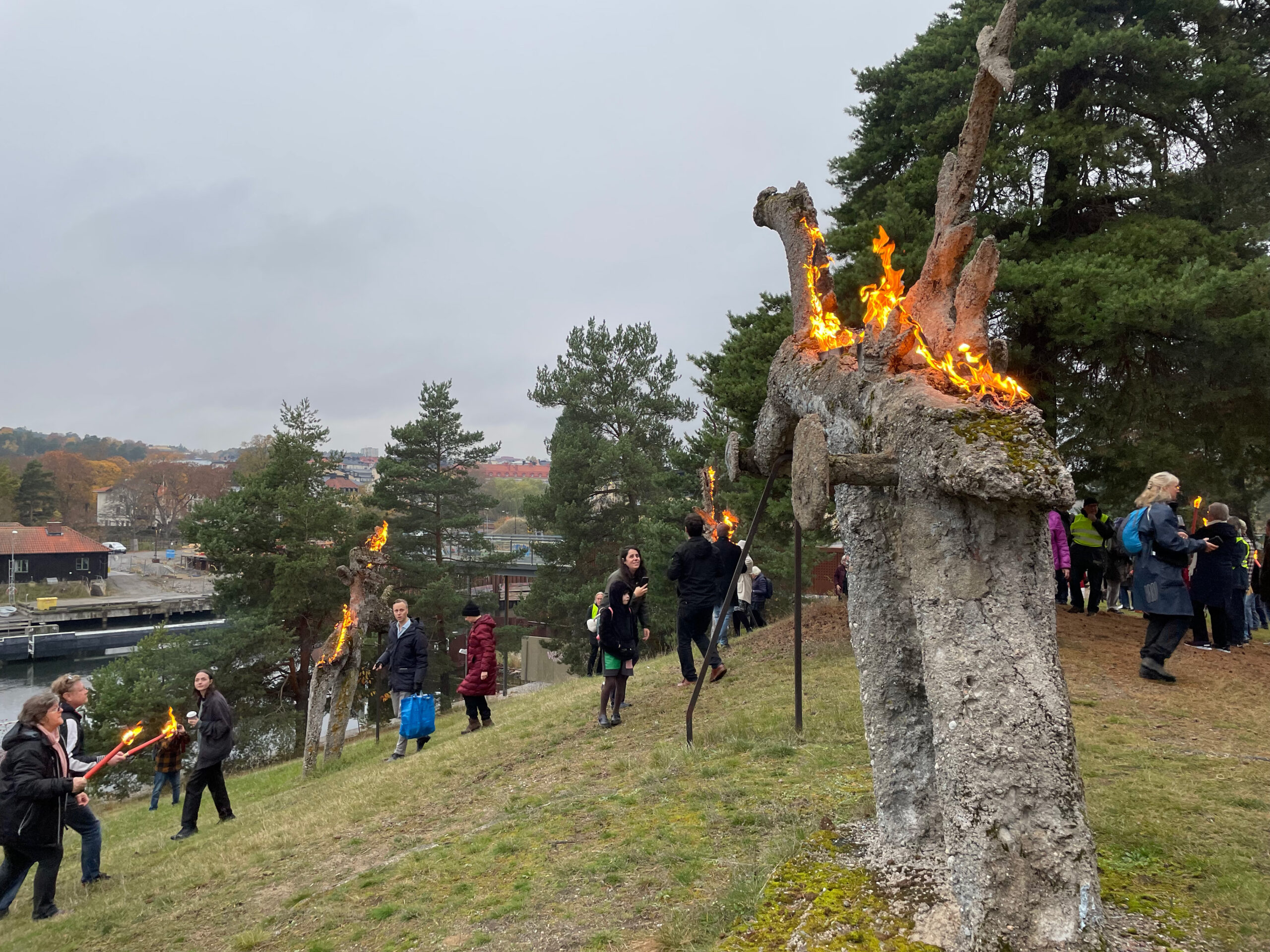
From the 50-years celebration of Sun Chariot October 2022. We illuminated Sun Chariot.